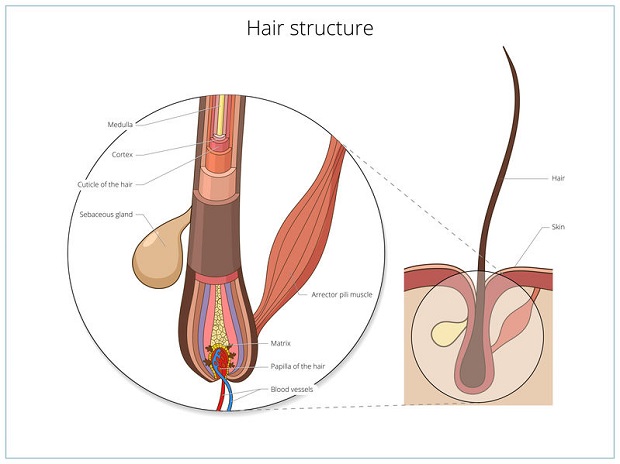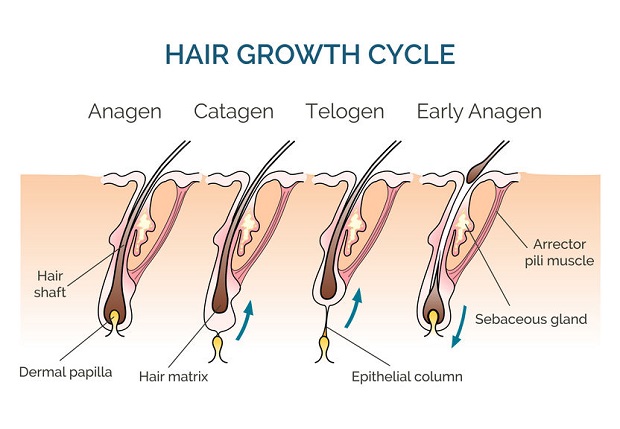
Does Waxing Reduce Hair Growth? Waxing does reduce hair growth. The waxing procedure literally rips your hair right out of the follicle. This causes damage to the hair follicle, which then tends to produce thinner and finer hairs at a slower rate than normal. Waxing over long periods of time will greatly reduce the hair in areas that are waxed regularly.
How Waxing Reduces Hair Growth (The Science)
To understand how waxing can have a future impact on hair growth, it helps to understand the anatomy of the hair follicle and the hair growth cycle.
Anatomy of the Hair Follicle

More than five million hair follicles cover the human body in nearly all places except for the palms of the hands and soles of the feet. Men generally have a few hundred thousand hair follicles more than women. The hair follicle may appear to be a basic structure, but an individual hair follicle is complex.
Every pore on the body has a canal-like structure beneath called a follicle that extends all the way from the epidermis to the dermis.
Bulb. The bottom of the hair follicle is called the bulb, which is where new hair growth begins.
Papilla. The papilla forms the bulb’s base, containing capillaries that nourish the cells.
Matrix. The matrix is above the papilla and is responsible for generating the hair and internal root sheath as well as the hair color.
Sebaceous glands. The hair follicle also contains sebaceous glands that produce and secrete an oily substance called sebum that conditions the hair within the follicle.
Hair Shaft. The hair shaft is made up of three keratin protein layers the medulla, cortex, and cuticle. By the time the hair visibly emerges from the follicle, it is essentially dead.
How Waxing Alters the Hair Growth Cycle

As you can see by the anatomy of a hair follicle, hair growth begins in the deep recesses of the pore. Therefore, cutting the hair will have no impact on the rate of hair growth. The same can be said about shaving it off. It will still leave the hair-generating pore intact to continue its job of growing new hair.
However, when considering waxing, the results are entirely different. Waxing rips hair directly out of the follicle, often damaging one or more parts of the complex hair follicle. This is what may impede hair growth in the future.
Compare Hair Removal Methods and Longevity

Shaving. The least long-lasting hair removal method as the hair is only removed at the epidermis level, leaving the remainder of the hair in the shaft.
Depilatory Creams. Work to dissolve the keratin of the hair shaft. The results are not permanent but are generally longer lasting than shaving because the entire hair shaft is removed.
Electrolysis. An electrical current damages the hair follicle through a tiny needle inserted into each hair follicle. Because the hair grows in cycles, it may take several sessions to see permanent results.
Laser Hair Removal. A laser beam or light pulse works to destroy the hair bulb—one of the longest-lasting hair removal methods and possibly permanent over the course of several treatments.





